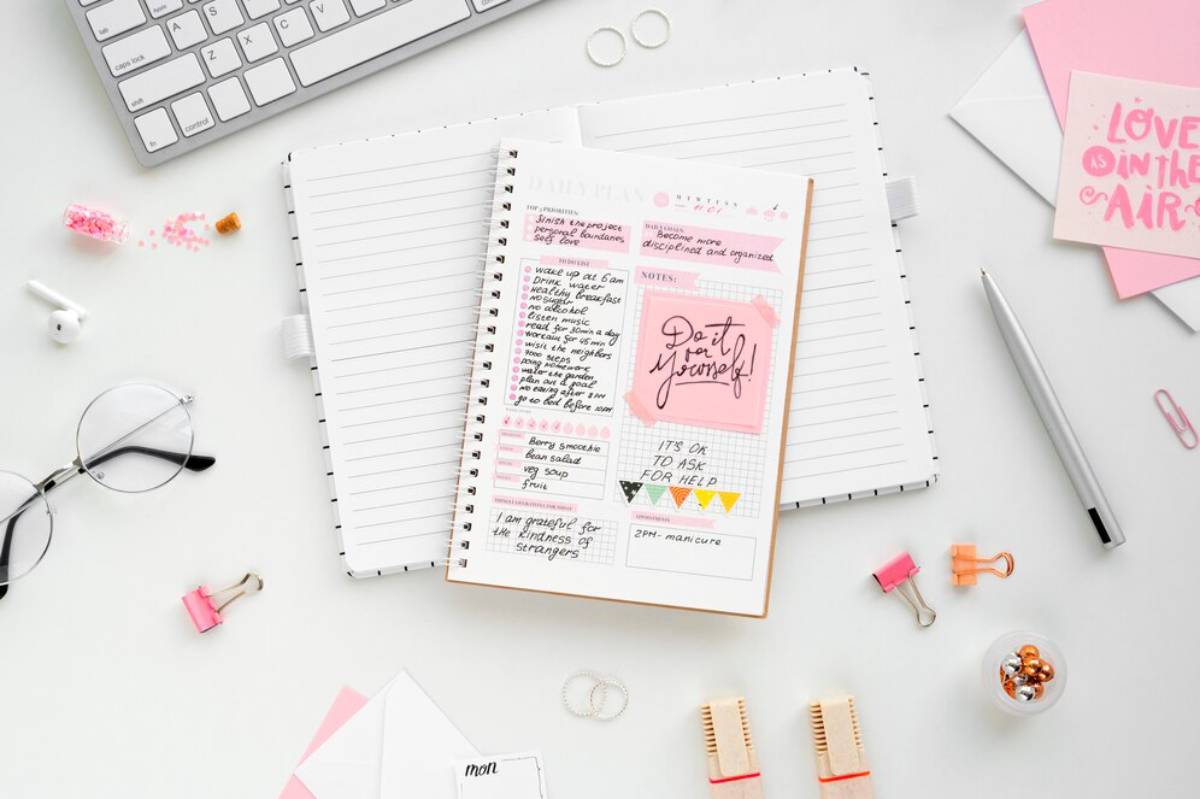
Top 5 Guided Journaling Methods for Daily Clarity
Ever feel like your mind is a cluttered desk, stacked high with papers you can’t quite organize? You’re not alone. In today’s fast-paced world, mental clarity can feel elusive. Guided journaling is an easy and effective way to clear your mind and sharpen your focus. Guided journaling prompts can help you with big life choices, everyday stress, or finding clarity. In this article, you’ll find the top five guided journaling methods. These methods will help you gain daily clarity. Plus, you’ll get practical journal ideas and exercises you can try today.
What is Guided Journaling?
Guided journaling means writing with prompts or frameworks that direct your thoughts. Guided journaling is different from free-writing. Instead of staring at a blank page, you get clear prompts. These prompts help spark reflection and insight.
It removes the pressure of “what do I write?” It offers a gentle roadmap. This helps you explore your emotions, goals, and challenges more clearly.
Use Guided Journaling for Daily Clarity
Before exploring the methods, let’s see why guided journaling is so effective:
- Enhances Mental Focus: By organizing your thoughts, journaling minimizes mental clutter.
- Promotes Emotional Balance: Writing about feelings reduces anxiety and improves mood.
- Supports Decision-Making: Structured prompts help evaluate options and outcomes logically.
- Boosts Self-Awareness: Regular journaling uncovers patterns and behaviours you may not notice otherwise.
Now, let’s get into the heart of the matter: the five best methods you can try today!
Method 1: The “5-Minute Clarity Booster”
Best for: Busy mornings and stressful afternoons.
How it Works:
Spend just five minutes answering these three questions:
- What are the three most important things I need to focus on today?
- What could distract me?
- What’s one thing I can do right now to feel more grounded?
Why It Works:
- Centres your mind around priorities.
- Prepares you for potential challenges.
- Instantly reconnects you with purposeful action.
Set a timer for five minutes to keep it quick and intentional.
Related Reading:Crafting Personalized Journaling Prompts for Breakthroughs

Method 2: Mind Map Journaling
Best for: Creative thinkers who prefer visual organisation.
How it Works:
Instead of writing paragraphs, draw a mind map. Place a central topic (e.g., “Work Project”) in the middle of your page.
Branch out with:
- Goals
- Challenges
- Resources
- Next Actions
Why It Works:
- Organises complex thoughts visually.
- Shows relationships between ideas at a glance.
- Sparks creative solutions.
Practical Example: Imagine you’re planning a major life transition, like a career change. A mind map can reveal overlooked factors, such as necessary skills or emotional concerns.
Method 3: “Morning Pages” with a Twist
Best for: Overthinkers and morning grumps.
How it Works:
Morning Pages, made famous by Julia Cameron in “The Artist’s Way,” are about writing three pages of stream-of-consciousness each morning. The twist? Start each session by answering this guided journaling prompt:
“What’s weighing most heavily on my mind today?”
Then, let yourself ramble freely from there.
Why It Works:
- Clears out mental “noise” before the day begins.
- Highlights hidden worries or hopes.
- Builds a daily habit of self-awareness.
Don’t censor yourself. Grammar, spelling, or “making sense” don’t matter — just write!
Related Reading: Morning Journaling to Cement Positive Routines

Method 4: Gratitude and Clarity Combo
Best for: Cultivating positivity and mindful awareness.
How it Works:
Each evening, write:
- Three things you’re grateful for.
- One thing you learned about yourself today.
- One intention for tomorrow.
Why It Works:
- Shifts focus away from stress towards positivity.
- Reinforces daily growth and learning.
- Sets a purposeful tone for the next day.
Method 5: The “Clarity Deep Dive”
Best for: Big decisions and life transitions.
How it Works:
When facing a major choice, use this journaling framework:
- What exactly am I deciding?
- What are my biggest fears about each option?
- What is the best possible outcome?
- What does my intuition say?
- What is my next step, however small?
Why It Works:
- Breaks overwhelming choices into manageable parts.
- Balances logic with intuition.
- Encourages proactive momentum rather than paralysis.
Analogy: Imagine changing a bright spotlight into a soft torch that lights up only the next step.
Guided Journaling Success
- Consistency Beats Length: Even five minutes a day works wonders.
- Create a Ritual: Journal with your morning coffee or before bed.
- Stay Honest: Journaling is for you, not your future biographers!
- Mix It Up: Try different methods depending on your mood or needs.
Common Mistakes to Avoid
- Overthinking Prompts: There are no “wrong” answers — write what feels true.
- Judging Yourself: Your journal is a judgment-free zone.
- Skipping Reflection: Take a moment to read over what you’ve written now and then. You’ll spot amazing insights!
Conclusion: Guided journaling methods
There you have it — five powerful, practical, and proven guided journaling methods to infuse your day with clarity, purpose, and calm. No matter if you prefer quick clarity, decision-making tools, or creative mind maps, there’s a style for you.
Remember, clarity isn’t a one-time achievement. It’s a daily practice. Spend a few mindful minutes each day. You’ll change how you face challenges, seize opportunities, and enjoy everyday moments.
Ready to grab your notebook and begin? Try one of these methods today and experience the difference for yourself. If you found this guide helpful, share it with a friend! You can also leave a comment below. I’d love to hear about your journaling journey!